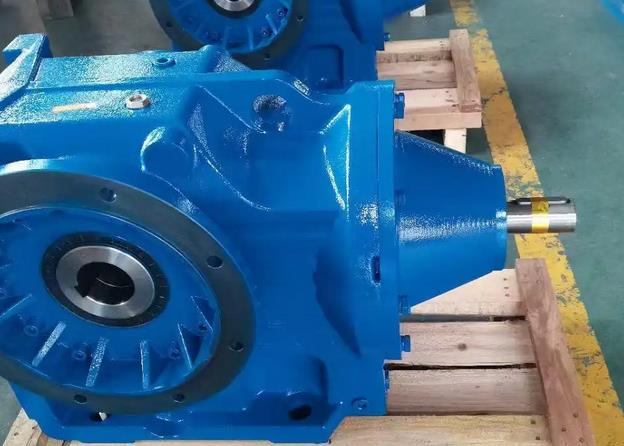How to check if the transmission shaft of the three-stage ZSY160-31.5-II hard tooth surface gear reducer is concentric
The method for checking the concentricity of the transmission shaft of the third level ZSY160-31.5-II hard tooth surface gear reducer is as follows:prepare tools
Dial gauge and gauge holder: used to measure the radial runout and axial displacement of the transmission shaft to determine concentricity deviation.
Magnetic gauge holder: The dial gauge can be fixed in a suitable position for easy measurement.

Feeler gauge: used to measure the gap between two transmission shafts and assist in determining concentricity.
Measurement steps
radial pulsation measurement
Fix the magnetic gauge holder on the casing of the reducer or other stable foundation to ensure that the gauge holder does not move during the measurement process.
Place the head of the dial gauge vertically against the outer surface of the drive shaft, usually near the coupling, and ensure good contact between the head and the shaft surface. Then adjust the dial gauge to zero.
Slowly rotate the transmission shaft, observe the pointer change of the dial gauge, record the maximum and minimum readings of the pointer, and half of the difference between the two is the radial runout value of the transmission shaft. If the radial runout value exceeds the specified tolerance range, it indicates that there is a problem of radial eccentricity in the transmission shaft.
Axial displacement measurement
Place the head of the dial gauge horizontally against the shaft end face of the transmission shaft, ensuring good contact between the head and the shaft end face and adjusting it to zero.
Push and pull the transmission shaft along the axial direction, observe the change of the dial indicator pointer, and record the difference between the maximum and minimum readings. This difference is the axial displacement of the transmission shaft. If the axial displacement exceeds the allowable range, it indicates that the transmission shaft is not concentric in the axial direction.
Measurement of coupling clearance
For transmission shafts connected by couplings, concentricity can also be checked by measuring the clearance between the couplings. Use a feeler gauge to measure the gap between the two ends of the coupling, select multiple points in the circumferential direction for measurement, and observe whether the gap is uniform. If the gap is uneven, it indicates that there is a problem with the concentricity of the two transmission shafts.
Data judgment
Different equipment and operating conditions have different requirements for the concentricity of the transmission shaft. Generally speaking, the concentricity tolerance of the ZSY160 reducer transmission shaft should not exceed 0.05-0.1mm in radial runout and 0.05mm in axial runout. The specific tolerance standards should refer to the user manual of the reducer or relevant industry standards.
If the measured data exceeds the tolerance range, adjustments need to be made to the installation of the reducer, such as recalibrating the position of the reducer, adjusting the installation of the coupling, etc., until the concentricity meets the requirements.
During the inspection process, it is important to ensure the accuracy and stability of the measuring tool, as well as smooth rotation and movement of the transmission shaft, in order to obtain accurate measurement results.

